The triple CD “The Flute Music of Francisco Mignone” , released in 2010, is a result of a research project conducted at UNIRIO with an indispensable funding by FAPERJ, through its 2008 Program for the Support for the Arts. This artistic product, a collection of three CDs on which most of the included repertoire has been recorded for the first time, sought to rescue relevant literature for the flute by Francisco Mignone, thus trying to contribute to its divulgation among the public and musicians interested in its performance. This project counted on a group of musicians of notorious artistic excellence, dedicated students and competent researchers, all of whom are somewhat related to UNIRIO´s Instituto Villa-Lobos.
Although present-time audiences generally associate Francisco Mignone (1897-1986) with his nationalistic piano music, his output is highly diversified, ranging from symphonic works and opera, to songs and chamber music in various aesthetics tendencies and styles.
Although still not well known, his contributions to the flute repertoire can be considered relevant not only for presenting a great number of works that include the flute, but also for the inventive manner in which this instrument is used, frequently demanding virtuosic abilities from the flute player. Mignone wrote more than thirty works, among original and transcribed ones, which include the flute. The inclusion of the flute in his chamber works probably resulted primarily from the fact that his father, Alfério Mignone, was a professional flutist and that Francisco Mignone himself played the flute in his youth.
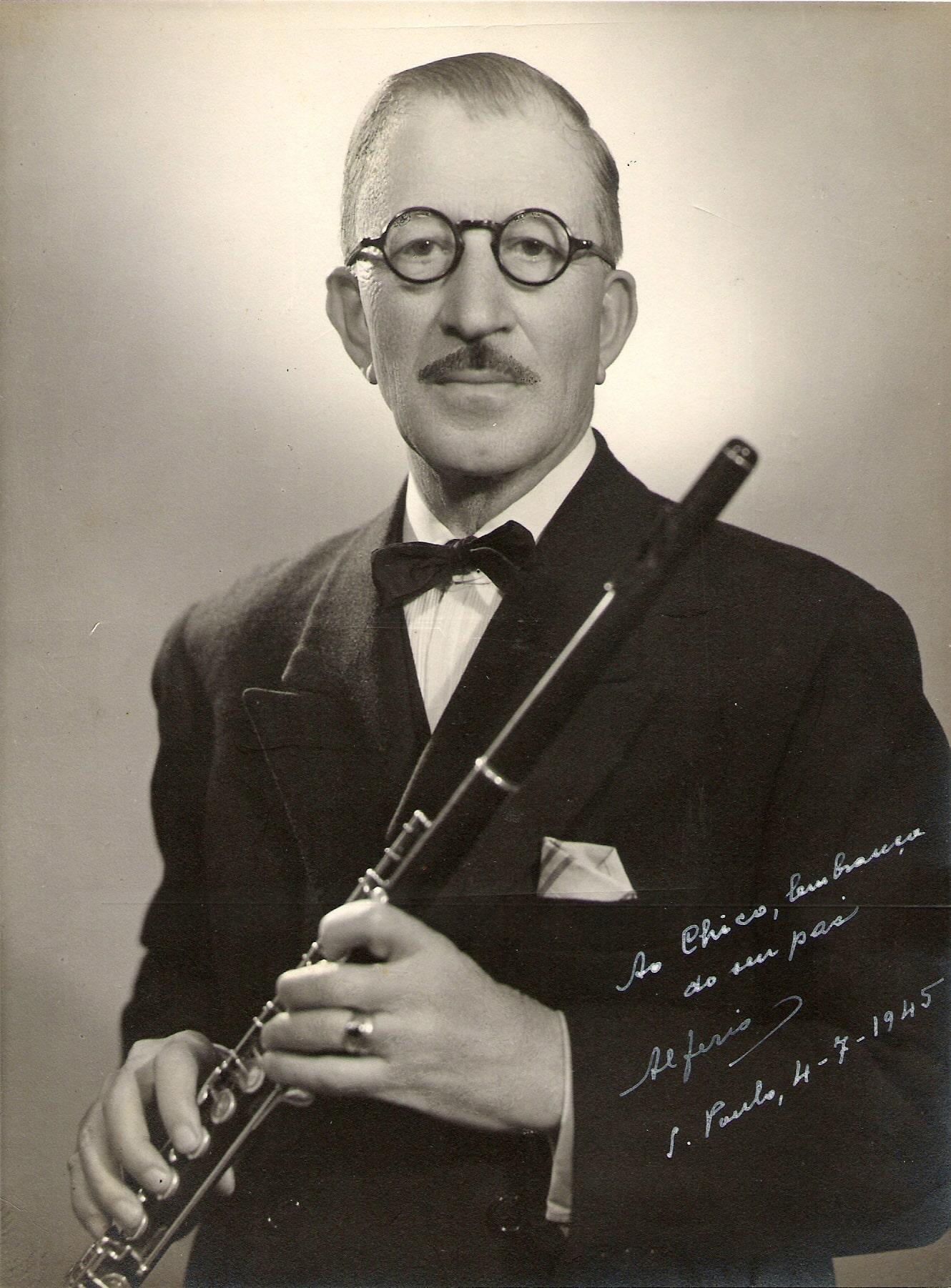
Alfério Mignone and his wooden flute, 1945.
This anthology of recordings presents part of this repertoire and includes, according to the composer’s own trends, some transcriptions of his music, created especially for this opportunity. This selected repertoire is representative of Mignone´s output since it contains the aesthetical aspects that characterized his compositional course: 1) popular music composed under the pseudonym of Chico Bororó; 2) European and neoclassical tendencies without any explicit nationalistic intention; 3) twelve-tone and serial procedures; 4) synthesis of two or more of the previous characteristics in his late days.
Popular Music: Chico Bororó
From his popular output, composed in his youth under the pseudonym of Chico Bororó, four works were selected given that they were recorded in 1930 with his father playing the principal line on the flute - as in the choro-waltz Céo do Rio Claro (The Sky of Rio Claro), the mazurka Assim Dança Nhá Cotinha (So dances Ms. Cotinha), and the waltz Saudades de Araraquara (Missing Araraquara) -, or playing a skillfully crafted counterpoint, as is the case in the waltz Celeste, which has clarinetist Antenor Driussi as the soloist and which was composed by Mignone and Alberto G. Fiúza. Assim Dança Nhá Cotinha and Saudades de Araraquara are only registered in this recording, without any surviving score either published or in manuscript. Although these works were composed in an earlier period of the composer´s life, they were released under the Parlophon label, which recorded nineteen of his compositions, a great number of which with the Paulistana Orchestra, under the baton and direction of Mignone´s father.
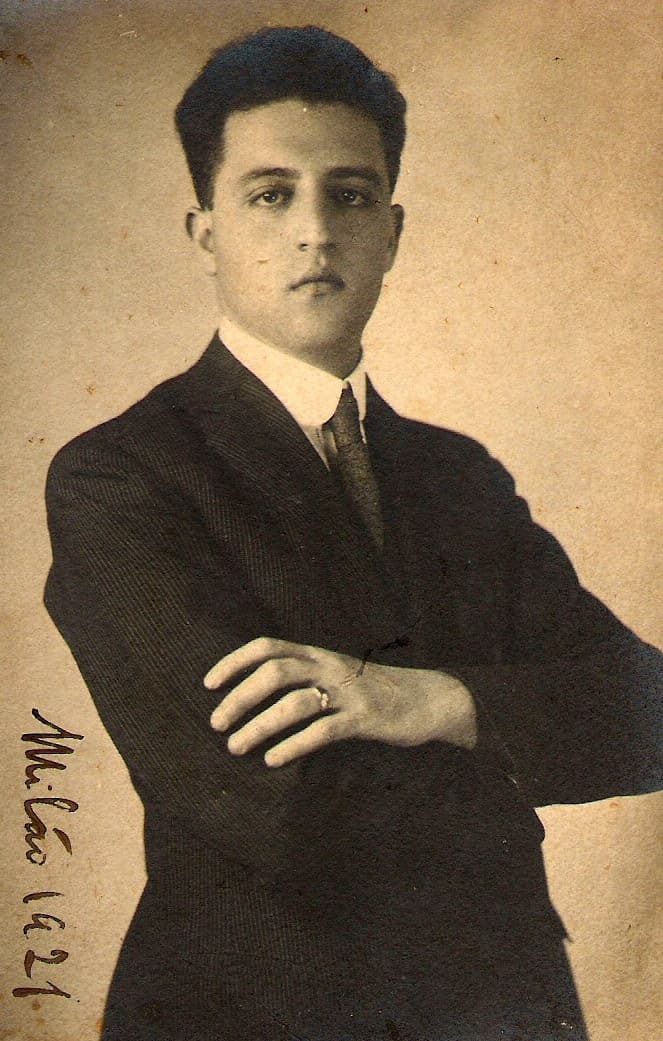
Francisco Mignone, 1921
Nationalistic music
Mignone arranged three of his successful piano pieces for flute and strings, probably commissioned by his father. Therefore, No fundo do meu quintal, Lenda Sertaneja n.8, and Cucumbizinho are grouped under the title 3 Peças (Three Pieces). 3a Seresta e Baianinha were also transcribed by the composer, but here for a woodwind quartet. 3a Seresta, originally written for cello and piano in 1935, is dedicated to the cellist Calixto Corazza. Other versions include cello and orchestra, mixed choir (1951), and woodwind quartet with string orchestra. This piece, an ABA form, resembles a serenade style similar to Mignone’s waltzes, with the bassoon part presenting a baixaria (bass line) typical of the seresta style. Originally written in 1951, Baianinha is a short piece for mixed choir based on a text by Wilson Woodrow Rodrigues (b.1916).
Cinco Peças para duas flautas doces (1976), for two recorders, are part of the composer’s pedagogical works. Mignone was very interested, probably influenced by his first wife Liddy Mignone, in producing music that could be used in the various music education phases. The pieces have titles that point towards children’s universe: Brejeiro (Astute), Uirapuru (Brazilian bird said to have magical powers), Dona Aranha, a fiandeira (Ms. Spider, the spinner), Cantiga de ninar (Lullaby), Pica-pau, o baterista da floresta (Woodpecker, the drummer of the forest). To this recording, some adapting was made in an attempt to render the music more effective for flute and oboe.
The piece Passarinho está cantando was written in 1952 for violin and piano. In this work, Mignone combines elements from Brazilian music in a short descriptive picture of its title. Modinha was composed in 1939 for cello and orchestra. Later, Mignone made versions for cello and piano and for piano. This is a work in which the composer explores the origins of the seresteiro style. The adaptation for alto flute and piano, presented here, accurately reflects the sound impression of the work.
Still in the scope of the nationalistic works, there are four examples of Mignone´s most important synthesis to the nationalistic output, the waltzes. Mignone states that the decision to write his series Valsas de Esquina resulted from the finding, in a conversation with Mário de Andrade, that the Brazilian waltz received the least influence from American music, remaining, despite its European origin, genuinely Brazilian.
Mignone transcribed two pieces from his Valsa de Esquina series for combinations that include the flute, number 7 and number 10. The 7th Valsa de esquina was originally written in 1940 for piano solo, dedicated to Sá Pereira, and transcribed to flute and strings and to flute and piano. Valsa de esquina nº 10 is dedicated to his first wife, Liddy Chiafarelli Mignone. It was composed in 1943 and published in 1944 by Mangione. Mignone transcribed the work to string quartet and to flute and strings. Valsa de esquina nº 2, composed in 1938 for piano and dedicated to Andrade Murici, was adapted from its version for violin and piano, published in 1947. Valsa Choro is an original piece for flute and piano composed in 1956, displaying a simple style, probably caused by its pedagogical intentions, which can be inferred by the indication in the manuscript that shows a dedication to “a student of Carrasqueira.”
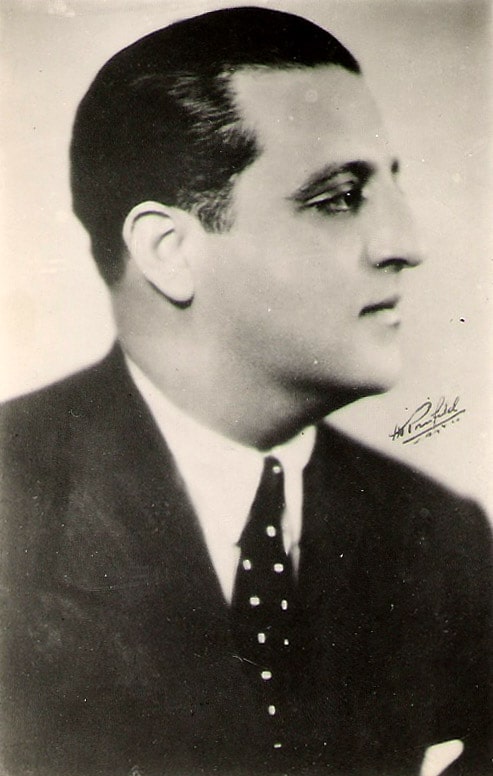
Francisco Mignone, 1940's.
Neo-classical music
Suíte para flauta e quarteto de cordas (Suite for Flute and String Quartet) represents Mignone’s most important work for this genre and it is marked by a trend towards ‘universal’ music. This suite was written during Mignone’s “crisis period”, which reflects his search for new paths. A neoclassical style frames a suite dedicated to his father, which perhaps explains its conservative characteristics and the inclusion of Italian dance forms. The work has five movements: Ária, Siciliana, Sarabanda, Minuetto, and Saltarello, in which the brilliant flute writing helps its sound to float above the strings, combining Romantic harmonic ambience with French impressionism gestures. The transcription for flute and piano is by the composer.
Though composed much earlier, the piece Gavotta All´antica for violin and piano is a work that follows the same tendency of Suíte: a neoclassical path. The composer also transcribed it for piano. The texture is delicate and evokes the graciousness of this type of dance. The adaptation of the violin part for the flute conserved these characteristics. Cantiga de Ninar (1925), however, is somewhat different. It is a song with text by Sibyka, Silvia Autuori’s nickname, wife of one of Mignone´s most frequent contributor, Leônidas Autuori. This work was transcribed by the composer for choir, piano, voice and orchestra, string orchestra and symphony orchestra. In the version presented here, with alto flute and piano, the song acquired a dense sonority and an introspective character.
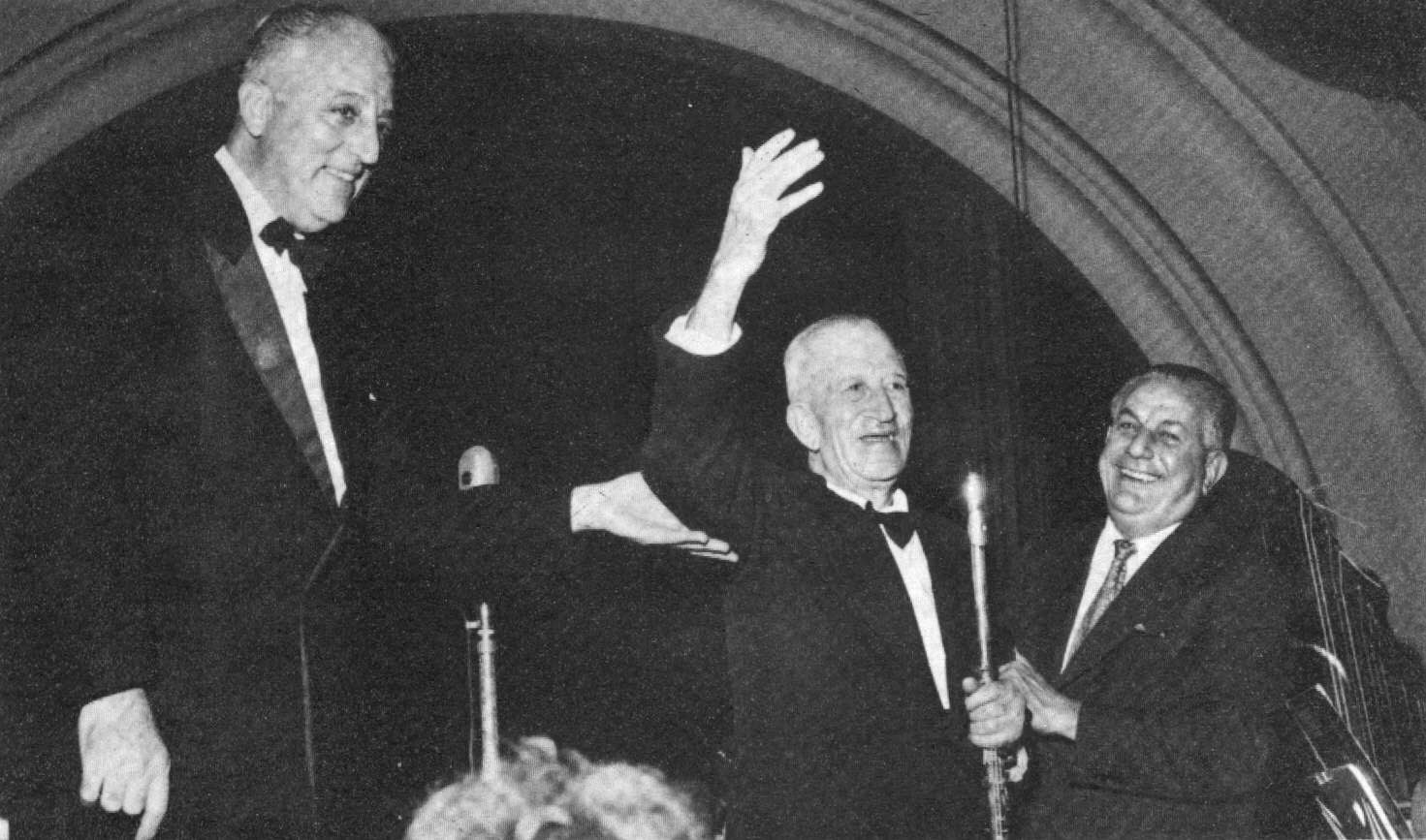
Francisco and Alfério Mignone in a concerto at Rádio Gazeta, 1957.
Atonal music
Mignone’s Sonata for flute and oboe was first composed in 1969, date shown in the first autograph manuscript. It was dedicated to Zacharias Valiatti e Walter Bianchi. In this recording, the composer’s second version of the same work from 1970 was used, which contains three movements: Vivo quasi preludiando, Quasi Ária, and Allegro. The new version includes an exchange of positions between the first and the third movements.
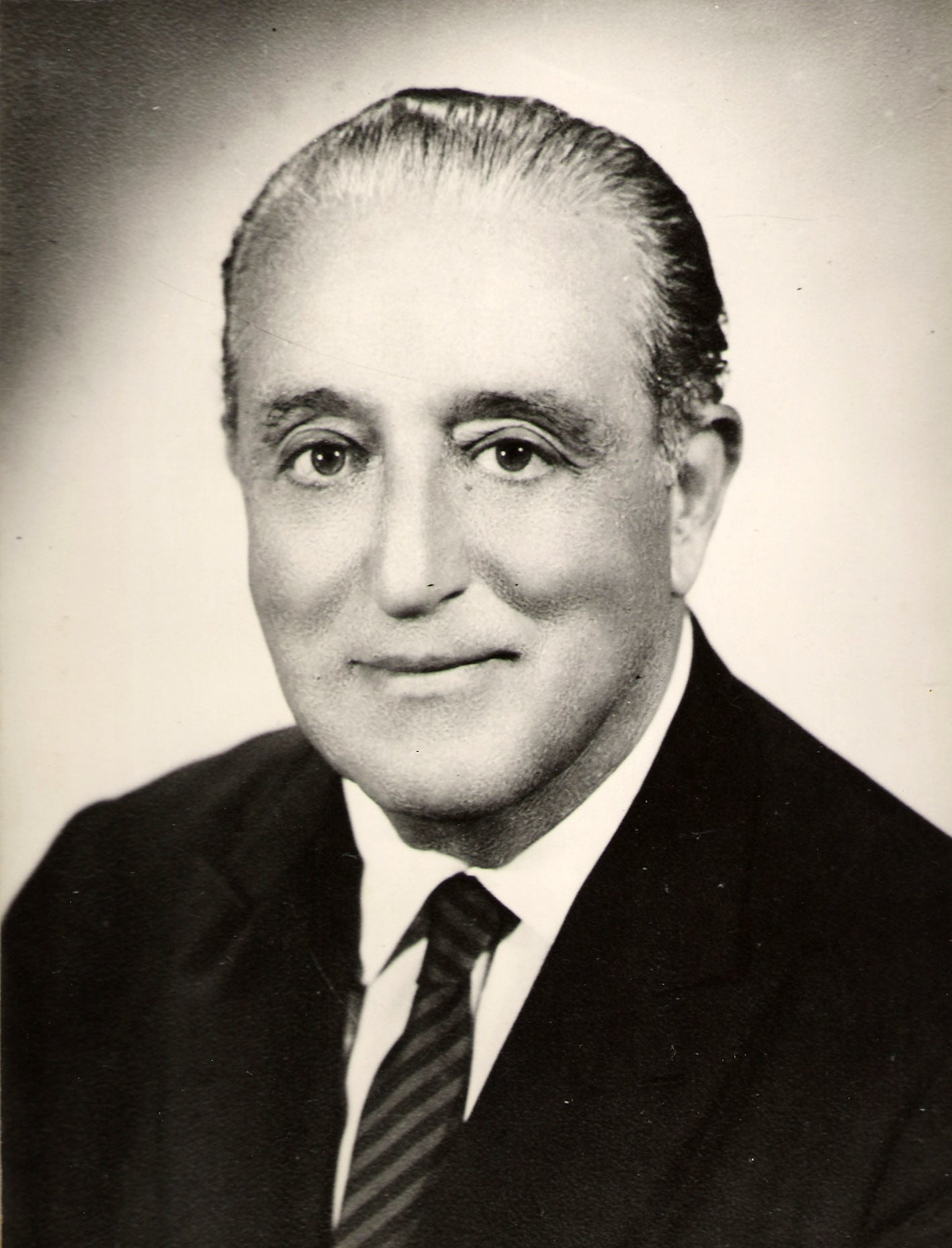
Francisco Mignone, 1960's.
The Sonata para flauta e piano (Sonata for Flute and Piano) was composed in 1962 and dedicated to Alfredo Montanaro, “grande amigo de meu saudoso pai” (a great friend of my deceased father’s), resulting in a major work for this combination, probably the most significant work for the flute among Mignone’s entire flute works. Mignone´s Sonata para flauta e piano stands out for two reasons: first because it is one of the few sonatas by Brazilian composers for such combination, and secondly, the composer´s knowledge of these two instruments and great skills in the utilization of serial procedures is made clear as attest the permutation procedures.
Late years music
The flute quartet formation gained great popularity among Brazilian composers in the 1970s and 1980s. Mignone contributed with six pieces for this instrumental combination: Ária, 5/8 Tem Vez, Pausa, Gavotta, Minuetto Irriquieto e Divertimento. The last five appear listed as 5 Peças para quarto flautas, an attribution of title that seems to have been assigned posthumously, similarly to the case of 3 Peças para flauta e cordas, as it is not on the manuscript. It is interesting to note that Ária, from the same period and with similar musical writing, is not listed anywhere. This is a common finding in Mignone´s output, as is the other way around: listed works that cannot be found.
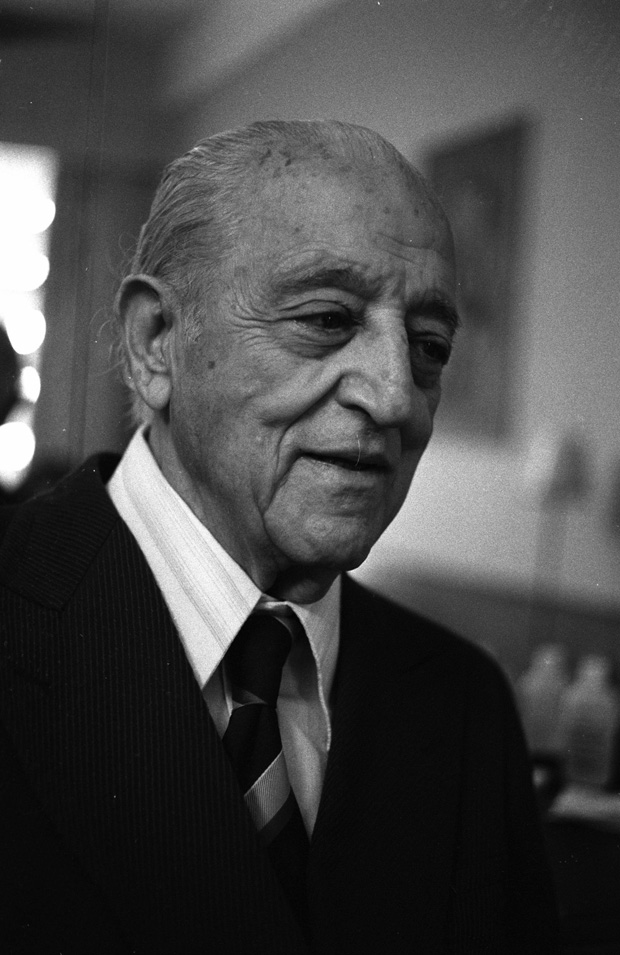
Francisco Mignone, 1980's.
In 1981, Mignone wrote two trios for flute, cello and piano within two weeks. These works display the characteristics of his last period, as they fully capture his return to tonal writing. Mignone describes the circumstances of the appearance of the trios as a departure “from the Verdian parody: ‘We should go back to the past, perhaps it could be a progress.’ A return to what I have been after overcoming obstacles inside and outside the musical staff.”
Repertoire
Cd 1
1-3. Três Peças 7:07
4-8. Suíte for flute and piano 12:22
9- 11. Sonata for flaute and piano (1962) 15:52
12. Céo do Rio Claro 3:41
13. Assim Dança Nhá Cotinha 3:28
14. Saudades de Araraquara 3:45
15. Celeste (1923) 3:24
Cd 2
1. 3ª Seresta for woowind quartet (1961) 4:07
2. Baianinha for woowind quartet (1961) 2:01
3-5. Sonata for flute and oboe ( 1970) 10:51
6-10. Cinco Peças for two flutes (1976) 6:43
11. Ária for flute quartet ( 1984) 3:29
12-16. Cinco Peças for flute quartet ( 1984) 12:24
17. Gavotta All´antica (1931) 2:57
18. Passarinho está cantando (1952) 2:04
19. Modinha (1939) 3:38
20. Cantiga de ninar (1925) 2:408
Cd 3
1-3. Trio nº 1 for flute, cello and piano ( 1981) 14:19
4-6. Trio nº 2 for flute, cello and piano (1981) 19:24
7. Valsa Choro for flauta and piano (1956) 2:56
8. Valsa de Esquina nº 2 (1938) 4:51
9. Valsa de Esquina nº 7 (1940) 4:37
10. Valsa de Esquina nº 10 (1938) 4:16
Total time 153:43
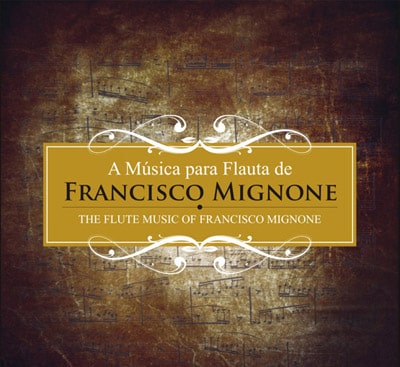
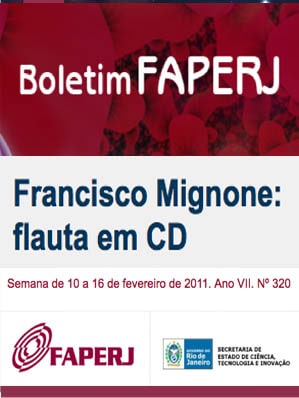
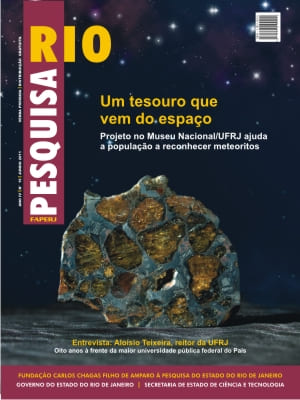
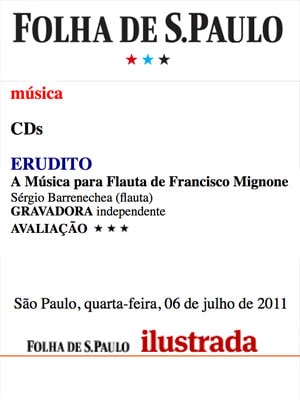
The CD triple "The Flute Music of Francisco Mignone" is sold off.